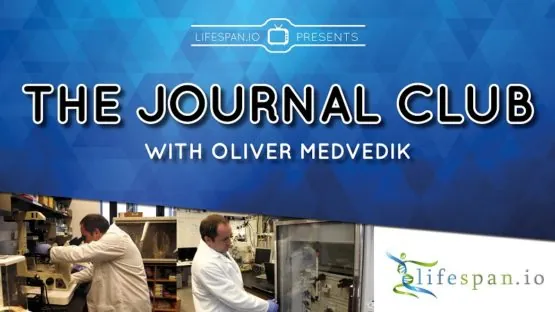Journal Club, hosted by Dr. Oliver Medvedik, will return on July 26th at 12:00 Eastern. This month, we are going to be taking a look at a recent paper where researchers showed that old human skin rejuvenated when implanted in young mice [1]. The study helps to pave the way for therapies that may one day rejuvenate aged organs and tissues.
Abstract
Transplanting aged human skin onto young SCID/beige mice morphologically rejuvenates the xenotransplants. This is accompanied by angiogenesis, epidermal repigmentation, and substantial improvements in key aging-associated biomarkers, including ß-galactosidase, p16ink4a, SIRT1, PGC1α, collagen 17A, and MMP1. Angiogenesis- and hypoxia-related pathways, namely, vascular endothelial growth factor A (VEGF-A) and HIF1A, are most up-regulated in rejuvenated human skin. This rejuvenation cascade, which can be prevented by VEGF-A-neutralizing antibodies, appears to be initiated by murine VEGF-A, which then up-regulates VEGF-A expression/secretion within aged human skin. While intradermally injected VEGF-loaded nanoparticles suffice to induce a molecular rejuvenation signature in aged human skin on old mice, VEGF-A treatment improves key aging parameters also in isolated, organ-cultured aged human skin, i.e., in the absence of functional skin vasculature, neural, or murine host inputs. This identifies VEGF-A as the first pharmacologically pliable master pathway for human organ rejuvenation in vivo and demonstrates the potential of our humanized mouse model for clinically relevant aging research.
Join this session of Journal Club live!
Time: Jul 26, 2022 12:00 PM Eastern Time.
Join Zoom Meeting
https://lifespan-io.zoom.us/j/83879391388?pwd=dHo5REYzTWYvdFp4NjZVZFhTNi9QZz09
Meeting ID: 838 7939 1388 Passcode: 191276
Literature
[1] Keren, A., Bertolini, M., Keren, Y., Ullmann, Y., Paus, R., & Gilhar, A. (2022). Human organ rejuvenation by VEGF-A: Lessons from the skin. Science Advances, 8(25), eabm6756.


